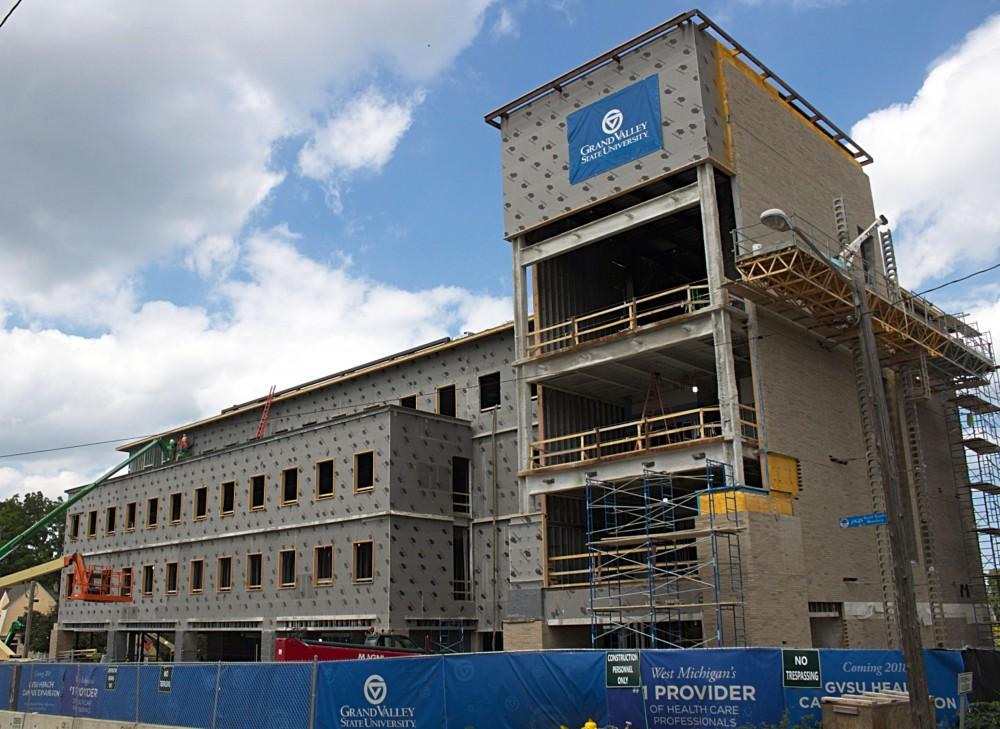How state funding, construction boom affect tuition

GVL / Josh Vissers
Dec 3, 2018
Currently, Grand Valley State University has the fourth lowest tuition rate and third lowest housing rate in the State of Michigan. Several factors contribute to how the university sets these rates including state funding, administrative costs and university bonds. GVSU’s spanning construction boom may be coming to an end soon, which could impact tuition prices.
“Now that more than likely the big building boom is over, I think there is potential for (lowering tuition),” said Vice President for Finance Greg Sanial.
Of course, there can be no certainties for potential tuition changes, as state funding remains one of the biggest influences of tuition rates. The university currently receives $72 million in state funding which works out to about $3,151 per student for a full academic year. GVSU’s state funding is relatively low for a Michigan institution. Michigan State University’s funding doubles that of GVSU’s at an approximate $6,231 per full year student. Tuition rates and state funding are essentially a balancing act that provide income to the university.
“To run a university, we need revenue,” Sanial said. “There’s only two ways we can get revenue: tuition and state appropriation. And one has to make up for the other essentially in order to run the university.”
The state appropriation process that distributes funding to universities is actually a political process that is tied up in Lansing. Michigan collects taxes and determines how much should be allocated to higher education, only then do they determine how much funding is distributed to each public university. The state has a fixed amount of the money, so any reallocation of funds would have to take from one to give to another. GVSU’s rapid growth in the past decade has resulted in state funding covering less for the increased number of students.
“As Grand Valley has grown, the appropriation never was adjusted to reflect that growth,” Sanial said. “If you were to reapportion the appropriation and make some adjustments, some universities would be better off and others would be worse off and that’s where the politics come into play.”
Regardless of GVSU’s moderate state funding, the university still has some of the lowest housing and tuition rates in Michigan. One reason for these low costs has to do with the university’s administrative expenses that fall much lower than the state average. The current state average is three thousand dollars for administrative costs which is about one thousand more than GVSU’s, but research universities can see up to five thousand in expenses for administration.
“From a tuition standpoint Grand Valley State is a very lean operation,” Sanial said. “That is the big reason why we can provide a quality education with a relatively low tuition rate compared to our peers.”
GVSU also supplies students with low housing rates compared to other state universities. This is attributed to whether or not freshmen are required to live on campus their first year. Freshmen at GVSU are not required to live on campus their first year of schooling, which puts the university in competition with off campus housing over quality, price and location. This competition results in the third lowest room and board rate for a Michigan public university.
Whether or not GVSU’s construction boom of the last several years will impact tuition rates is still uncertain, but possible. The most recent scheduled construction project is the new health sciences building on Grand Rapids’ Medical Mile is projected to cost about $70 million. Roughly $29 million of funding is being facilitated from the state, with the remaining amount being provided by donors and loans. Once the university begins winding down its construction efforts there is potential for money in the university’s general fund to be redistributed from construction to financial aid or to ease tuition price. However, the decisions on funding allocation falls on GVSU’s Finance and Administrative Division.
“Its kind of complicated,” Sanial said. “I don’t think we will see immediate relief in any respect to next year because we still have the bond obligations.”

























